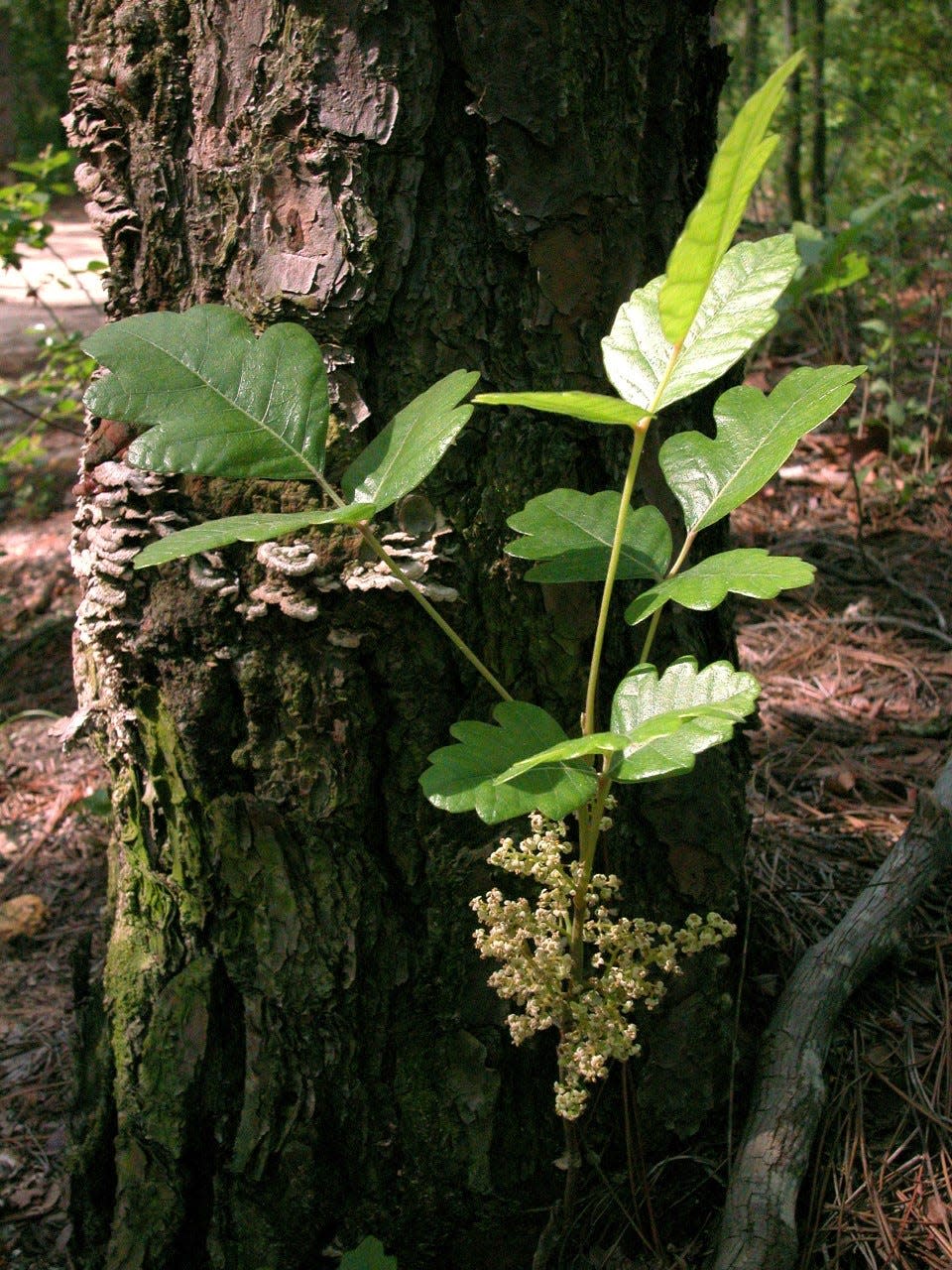Want a happier summer? Avoid poison ivy. Here's how to do it.
Summer brings the sun, warmth, and the opportunities for outdoor activities for families in the area, but it also has a few unpleasantries.
Poison ivy is a summer plant notorious for causing havoc. Learning how to identify these plants and avoiding them could ensure you do not have your summer activities interrupted.
Poison ivy is a perennial, vine-type plant that produces an oily resin called urushiol. Many people will experience allergic reactions to urushiol when they come in direct contact with it. The oil can cause itching, redness, swelling, and blisters as well as burning sensation when the oil is inhaled from burning the plant.
The oil can also remain on clothing for longer periods of time causing allergic reactions to unsuspecting family and friends.
More: Here's how to identify (and fight) cedar-apple rust on your trees
Learning how to identify poison ivy is vital to avoiding the problem. It is a deciduous vine that typically grows in clusters of three leaflets but could have as many as five leaflets on the same plant.
Its leaves are glossy and oval shaped but can have smooth or serrated edges. Early in the spring, the leaves are light green but they turn to a reddish orange as the summer progresses. It can be found growing in a small, shrublike cluster from the ground or in a vine form connected to the trunk of dead or living trees.

Poison ivy is often confused with Virginia creeper. The major difference is Virginia creeper has five leaf clusters instead of three. Virginia creeper does not produce urushiol and typically will not cause the symptoms that poison ivy will.
Cleaning up around your property will help control poison ivy. Always wear protective clothing when dealing with poison ivy. Long sleeves, long pants, gloves and closed-toe shoes are a minimum. Make sure to launder clothing immediately after removal. You can manually remove poison ivy but often, herbicides are necessary for adequate control.
When you and your family are out in the woods this time of year, exposure to poison ivy is likely. Wearing long pants, socks, and closed toed shoes are your best protections. Make sure to shower and launder your clothing after your outdoor activity.
P. Andrew Rideout is the UK Extension Agent for Horticulture and can be reached at pandrewrideout@uky.edu.
This article originally appeared on Henderson Gleaner: How can I tell if it's poison ivy?

